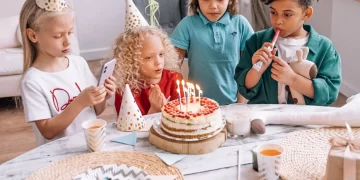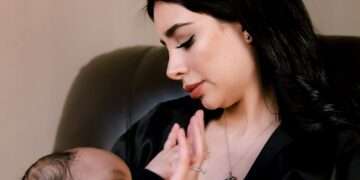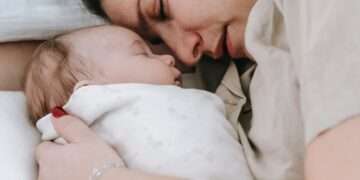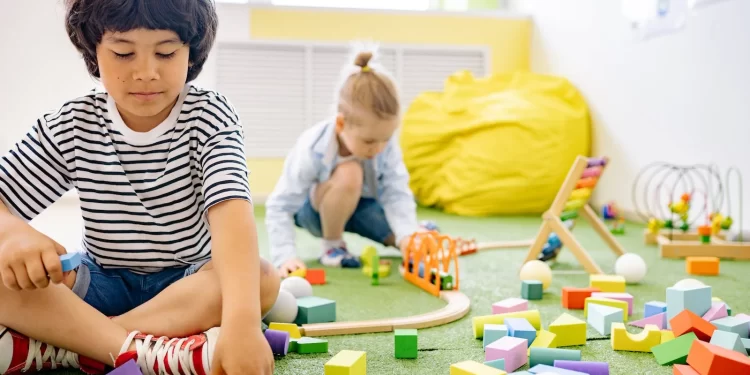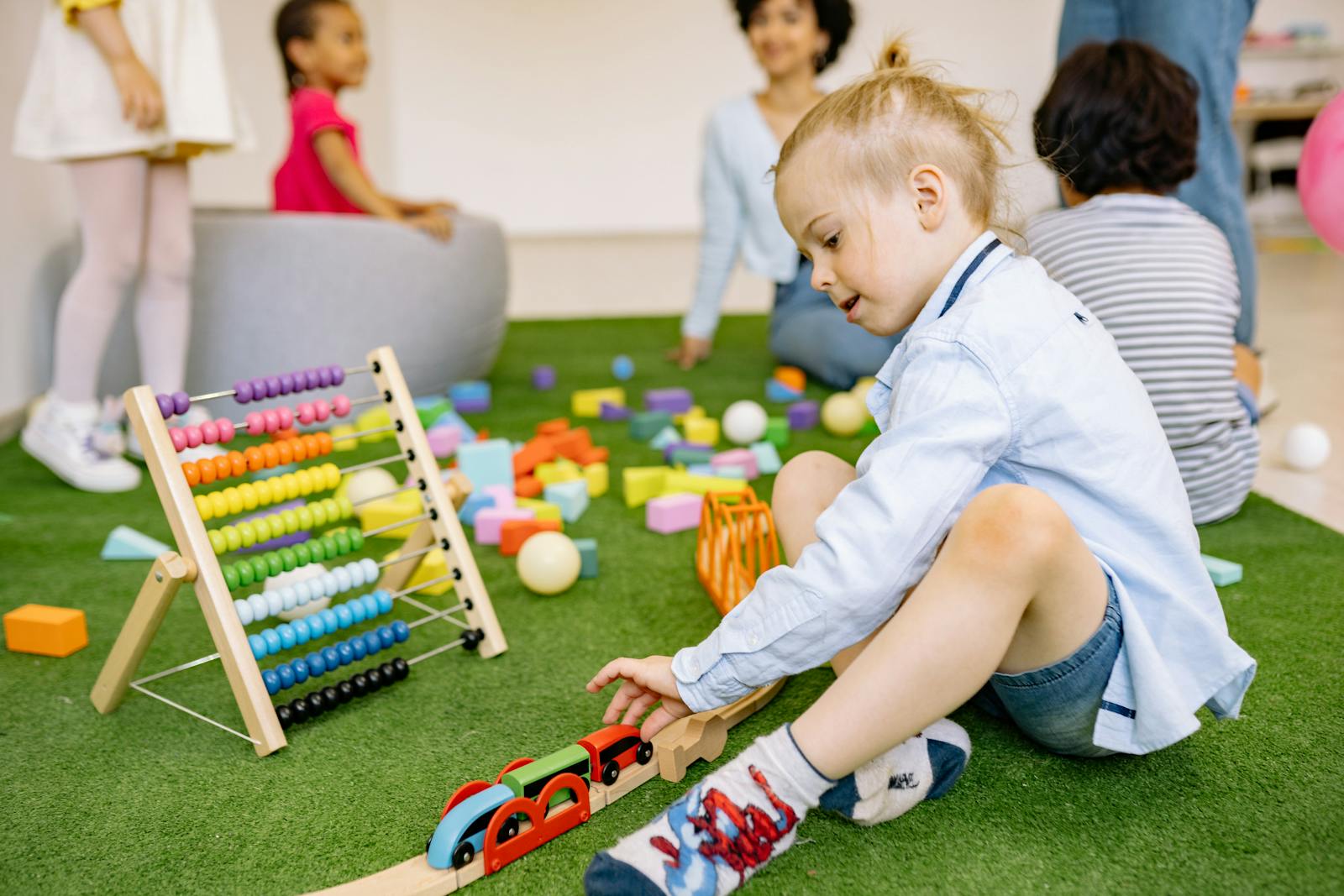
Educational games and toys for preschoolers can be both fun and beneficial for their development. These tools help young children learn important skills while engaging in play. When choosing the best toys for your classroom or for your child at home, remember that simple is best. Children will learn better in an environment that is not cluttered with toys, but instead in a space that is clean, simple, and with room for their imaginations.
Preschool is a crucial stage in a child’s development, and the use of educational games and toys can have a profound impact on their growth and learning. In this article, we’ll explore the numerous advantages of incorporating educational games and toys into a preschooler’s daily routine. We’ll examine how these tools can enhance cognitive, social, and emotional development in a fun and engaging way, all while setting the stage for a lifelong love of learning.
What are the best toys for Preschoolers?
These are some of our favorite toys! While playing with them kids are learning critical thinking skills, engineering, scientific concepts, fine motor skills, and more! With the holiday shopping season officially in full swing, children many parents, grandparents, aunts, and uncles find themselves wondering what to buy for their children. Store shelves are full of brightly colored electronic toys, heavily marketed on television and sure to catch young children’s attention. But what toys stand the test of time? What are the things children will go back to again and again? What toys help children learn and grow?
Blocks and building toys
Preschooler’s Block play has been found to stimulate brain development in all developmental areas. In fact, in the study “Block Play Performance Among Preschoolers As a Predictor of Later School Achievement in Mathematics” published in the Journal of Research in Early Childhood Education, researchers proved that children who play with blocks regularly when they are 3, 4, and 5 years of age will do better in math, especially algebra in middle school.
There are many fun block and construction set options to consider, including basic large wooden unit blocks, flat plank style blocks, small wooden blocks, blocks that snap together, large cardboard blocks, and construction sets. Many children enjoy being able to add items such as small dolls, animals, cars, and other props to their block play.
Educational Board Games
Board games designed for preschoolers can be both entertaining and educational. Games like “Candy Land” or “The Very Hungry Caterpillar” teach counting, colors, and turn-taking. Our Learning Educational Board for preschoolers includes three wooden boards, each dedicated to alphabets, numbers, and shapes. With the help of this game, your kid can easily learn the alphabet, numbers, and shapes. As per the official product description, it is designed to help with “cerebral development and promotes hand-eye coordination, fine motor skills, and problem-solving skills
Alphabet and Number Toys
Toys that introduce letters and numbers in a fun way help preschoolers start developing basic literacy and numeracy skills. This could include alphabet blocks, magnetic letters, or number flashcards.
Educational Books
High-quality preschool books are invaluable for language development and early reading. Look for books with rhyming text, vibrant illustrations, and age-appropriate themes.
Math Manipulatives
Tools like counting bears, linking cubes, or pattern blocks help kids grasp basic math concepts, such as counting, sorting, and recognizing patterns.
Art Supplies
Art supplies like crayons, markers, and finger paints encourage creativity and fine motor skills. Drawing, coloring, and painting allow children to express themselves and practice basic writing skills.
Shape and Color Sorters
These toys help preschoolers identify and differentiate shapes and colors. They also encourage problem-solving as children figure out which slot each shape fits into.
Educational Apps
Some well-designed educational apps for tablets or smartphones can reinforce learning in an interactive way. Look for apps that cover subjects like reading, math, and science.
Science Kits
Simple science kits for preschoolers can introduce them to basic scientific concepts. Kits related to plants, magnets, or simple chemical reactions can be engaging.
Puzzles and problem-solving toys
Puzzles, similar to blocks, support children’s development in a variety of ways. As children solve puzzles, they are utilizing problem-solving skills, hand-eye coordination, fine motor skills, shape recognition, memory, spatial-awareness skills, and more.
Toddlers ages 2 to 3 will do best with puzzles with four to 12 pieces. Preschoolers ages 3, 4, and 5 will enjoy more complex puzzles with 12 to 20 or more pieces. Other toys in this category include toys with latches, locks, hooks, buttons, snaps, etc. for children to manipulate, blocks that snap together, collections of objects such as shells, keys, etc., and counting bears.
Magnetic Tablet
This magnetic tablet offers a very flexible drawing structure thanks to its compact design. While it allows preschooler to learn letters, numbers, and shapes that they will need throughout their educational life, it also allows them to use their imagination as they wish.
Pretend play items
A dramatic play or pretend play area is a staple in all early childhood classrooms. Children love to be police officers, doctors, construction workers, or teachers, but they are also learning a lot while doing so. The National Association for the Education of Young Children (NAEYC ), the major accrediting body of early childhood programs, stated in a recent position paper, “High-level dramatic play produces documented cognitive, social and emotional benefits.”
It is through pretend play that children first begin to explore their own likes, interests, and the world around them. Pretend play gives children an opportunity to work through new, different, confusing, or scary life experiences. Children are building their social and emotional skills, supporting complex problem-solving skills, learning to read social cues, share, take turns and so much more when they engage in dramatic play.
Toys that support this play include child-size furniture, dress-up clothes, dolls, doll clothes, pretend play food, cash registers, transportation toys, and any creative items that allow children to pretend. Prop boxes with items to support a theme of the play, such as the items needed for a veterinary clinic, can be a fun way to support children’s interests.
Things to create with
Why art is important for early childhood development,” the author shares that the following are skills children support when engaging in art experiences:
- Fine motor skills. Grasping pencils, crayons, chalk, and paintbrushes helps children develop their fine motor muscles. This development will help your child with writing, buttoning a coat, and other tasks that require controlled movements.
- Cognitive development. Art can help children learn and practice skills like patterning and cause and effect (i.e., “If I push very hard with a crayon the color is darker.”). They can also practice critical thinking skills by making a mental plan or picture of what they intend to create and following through on their plan.
- Math skills. Children can learn, create, and begin to understand concepts like size, and shape, making comparisons, counting, and spatial reasoning.
- Language skills. As children describe and share their artwork, as well as their process, they develop language skills. You can encourage this development by actively listening and asking open-ended questions in return. It is also a great opportunity to learn new vocabulary words regarding their project (i.e., texture).
Materials to support open-ended creativity include a variety of writing/drawing tools such as crayons, colored pencils, markers, chalk, paint, watercolor paint, finger paint, paper of varying weights and sizes, safety scissors, modeling clay, playdough, playdough tools, glue and a variety of scrap materials for collages. Musical instruments such as tambourines, maracas, rhythm sticks, and xylophones allow the creation of music are other creative arts options as well.
Large motor play items
While many people are aware of the importance of physical activity in supporting children’s health and development, preventing weight gain, etc., it is less commonly recognized that physical activity supports academics as well. Regular participation in large motor activities in early childhood has been found to improve attention and memory, increase academic performance, and improve actual brain function by helping nerve cells multiply, creating more connections for learning. It is important for children to have the opportunity to engage in large motor play.
Materials to consider purchasing to support large motor play include ride-on toys such as tricycles, bicycles, and balance bikes, large and small balls to throw, kick, and catch, climbers with soft material underneath, plastic bats and balls, targets and things to throw at them, wagons and wheelbarrows, tunnels to climb through and pounding or hammering toys.

What Makes a Toy Educational?
Educational toys are objects that stimulate learning while keeping preschoolers engaged through playtime. Learning toys encourage children to interact, cooperate, problem-solve, and explore, and many of them are designed to be used in various ways to support creativity. They actively develop children’s physical, cognitive, and social-emotional skills and educate them on particular subjects. To decide whether a toy to be bought for a child is educational or not, it is necessary to decide whether the toy serves these purposes.
Top 7 Reasons Why Parents Buy Educational Toys
For a long time, the traditional school structure separated playing from learning. Educators believed that playing was something you enjoyed in the schoolyard in your free time and learning was something you did by listening, taking notes, and memorizing dates, multiplication tables, and formulas. However, scientific research in the field of education is changing a lot of our former approaches. As we discover more about how children learn best, we gain new tools to make learning approachable and even fun!
So, does this mean you need to include educational toys and games in your collection at home? Read through this list of why many parents buy educational toys and come to your own conclusion.
1. Play is how children learn.
Children learn about the world around them through play. More and more, we are realizing the importance of hands-on learning. Education cannot focus solely (or even mainly) on listening and memorizing because some of the most effective learning is done by doing.
Play can help children learn about their emotions, explore their creativity, and learn problem-solving and social skills. If you want your child to succeed in school and life, make sure they have plenty of opportunities to play creatively in ways that both challenge and reward them.
2. Educational toys inspire problem-solving and introduce new interests.
Many toys (like games and puzzles) involve problem-solving, and educational toys put that skill front and center. They’re designed to challenge your child in a way that also encourages and inspires solution-based thinking.
Sometimes, these educational toys focus on specific school subjects, such as math or spelling. But often, they utilize methods that enhance spatial awareness or social cooperation. These behavioral skills can complement the measurable ones your child is learning in school.
Plus, educational tools can make concepts that seem abstract — like robotics, electricity, or magnetism — into something your child can experiment with and understand. Many educational tools have the bonus feature of exposing your child to concepts, experiences, and subjects that might prove to become long-term interests, like sculpture, archeology, biology, and more.
3. Educational toys develop sensory motor skills.
Educational toys for young children are not only good for the mind but also the body and the mind/body relationship. Building-based, sound-based, and color-based toys for young children often focus on developing sensory motor skills like proprioception, which is the awareness of the position and movement of the body.
Body awareness is about correctly judging the location of each part of your body in space: Is your elbow going to bump into a button? Will your finger knock over a balanced block? Body awareness also helps you develop visual motor skills — understanding how what you are seeing will affect and be affected by your body.
These skills come in handy for doing almost everything in life: writing, playing sports, driving a car, and more. Understandably, games and toys that encourage young children to develop this awareness early will set them on a rewarding path.
4. Toys can improve fine motor skills as well.
Once a child has a good grasp of visual motor skills, body awareness, and balance, they can take the next step: using toys that develop fine motor skills. Any toys or games that involve building with small pieces, painting, coloring, drawing, or crafting are toys that are increasing your child’s fine motor skills. You might later see these skills reflected in a child’s typing speed, handwriting legibility, or playing a musical instrument.
5. Toys can make school subjects more interesting.
Educational toys aren’t just helpful for balance and motor skills — they can also give children a better shot at understanding difficult school subjects. STEM toys can help children develop their scientific reasoning skills, memorize multiplication tables, and enhance their engineering abilities. Toys make STEM subjects more interesting by introducing elements of competition, problem-solving, reward, and (of course) fun.
6. Play can improve concentration.
Playing with toys can be a great way to improve concentration. When kids play, they’re not only having fun but also exercising their concentration. This is especially important for children who have learning disabilities.
When kids concentrate on a toy or game, they can focus their attention and block out distractions. Toys like puzzles, building blocks, and games that require concentration and determination to win can help your child develop this skill and improve it over time.
7. Playing with others develops social and emotional intelligence.
Through play, we learn how best to interact and solve conflicts with others. While solo play is essential for developmental growth, group play is equally so. Playing with others can excite a sense of collaboration and foster healthy competition. There are many educational toys for both solo and group play. It’s good to have a collection of both available for your child so they can learn how to entertain themselves independently and interact well with others.
You may have heard the saying, “All work and no play makes Jack a dull boy.” Well, scientific research has certainly backed up that statement with its findings on the importance of play. Therefore, if you want to provide your children with the best possible learning environment, remember to give them ample opportunities for fun with educational toys and games.
FAQ:
1. What are smart toys for preschoolers?
Ans: In addition to being electronic or interactive, smart toys often have a learning component. Whether it’s STEM toys or educational toys that encourage language development or social interaction, the idea is that they teach children through play—which makes learning more fun.
2. How to choose the right educational toys for preschoolers?
Ans: When choosing a toy for preschoolers, you should know whether it is safe, which skills it supports, the age group it appeals to, and its physical components. If these factors match your child’s characteristics, you can safely buy the toy.
3. Where can you buy educational toys for preschoolers?
Ans: Online stores and most local toy shops sell a variety of educational toys categorized by age group. You can buy toys from any shop that you trust, considering the product features.
4. Are technology-based preschool educational toys beneficial?
Ans: Contrary to preconceptions, high-quality, technology-based educational toys and games for preschoolers, such as one of the best preschool apps, can significantly contribute to child development, as long as pedagogues and major child education authorities approve them.
5. Can educational toys replace formal education?
Ans: Absolutely no. Educational toys can not replace formal education as the toys are there to get them started and prepare them for their formal education.
Conclusion: In conclusion, Educational toys for young preschoolers are not only good for the mind but also the body and the mind or body relationship. Building-based, sound-based, and color-based toys for young children often focus on developing sensory motor skills like proprioception, which is the awareness of the position and movement of the body.
The use of educational games and toys for preschoolers offers a wealth of benefits. These tools not only make learning enjoyable but also lay a solid foundation for a child’s future academic success. By incorporating them into a child’s daily routine and actively engaging with them during playtime, parents can nurture young minds and foster a love for learning that will last a lifetime. So, let’s continue to explore, play, and learn together, one educational game at a time.
